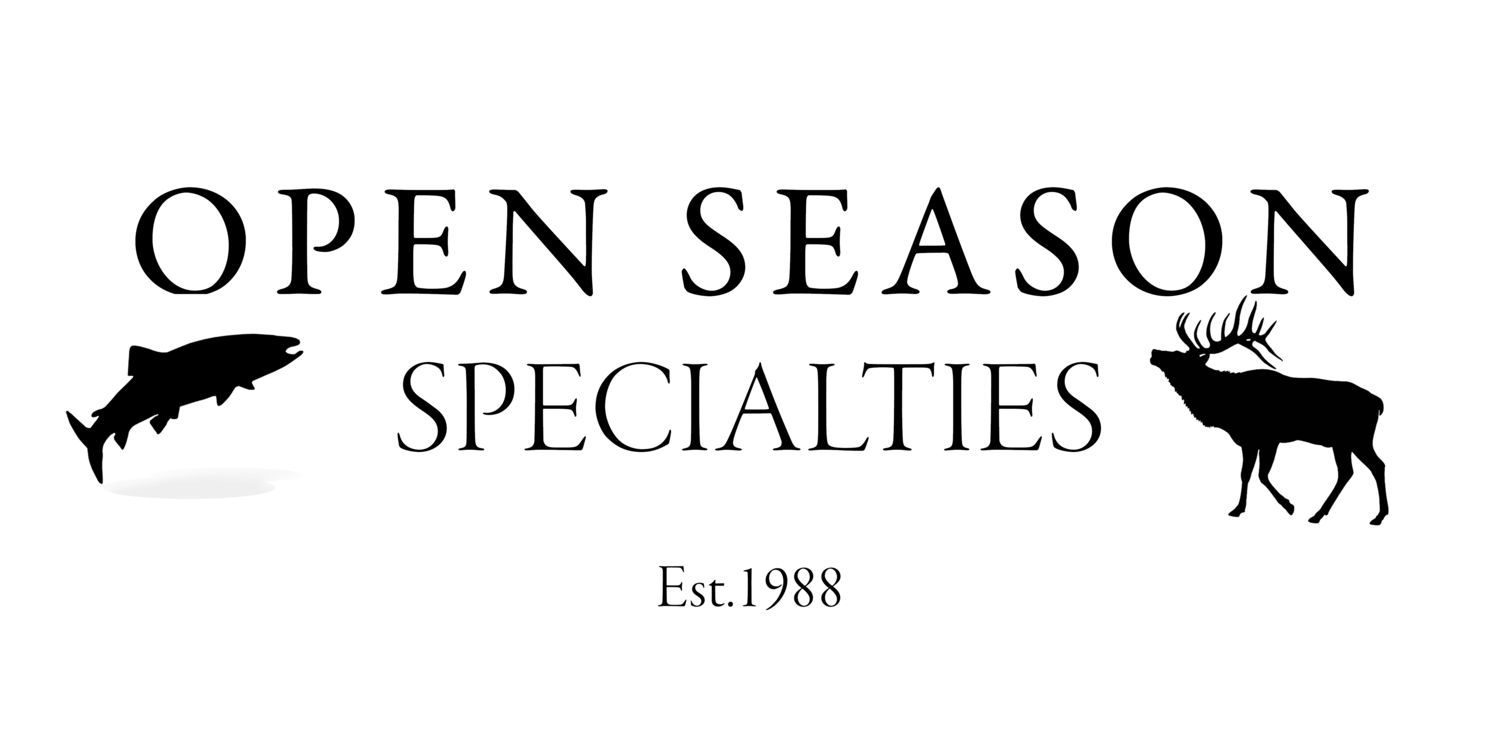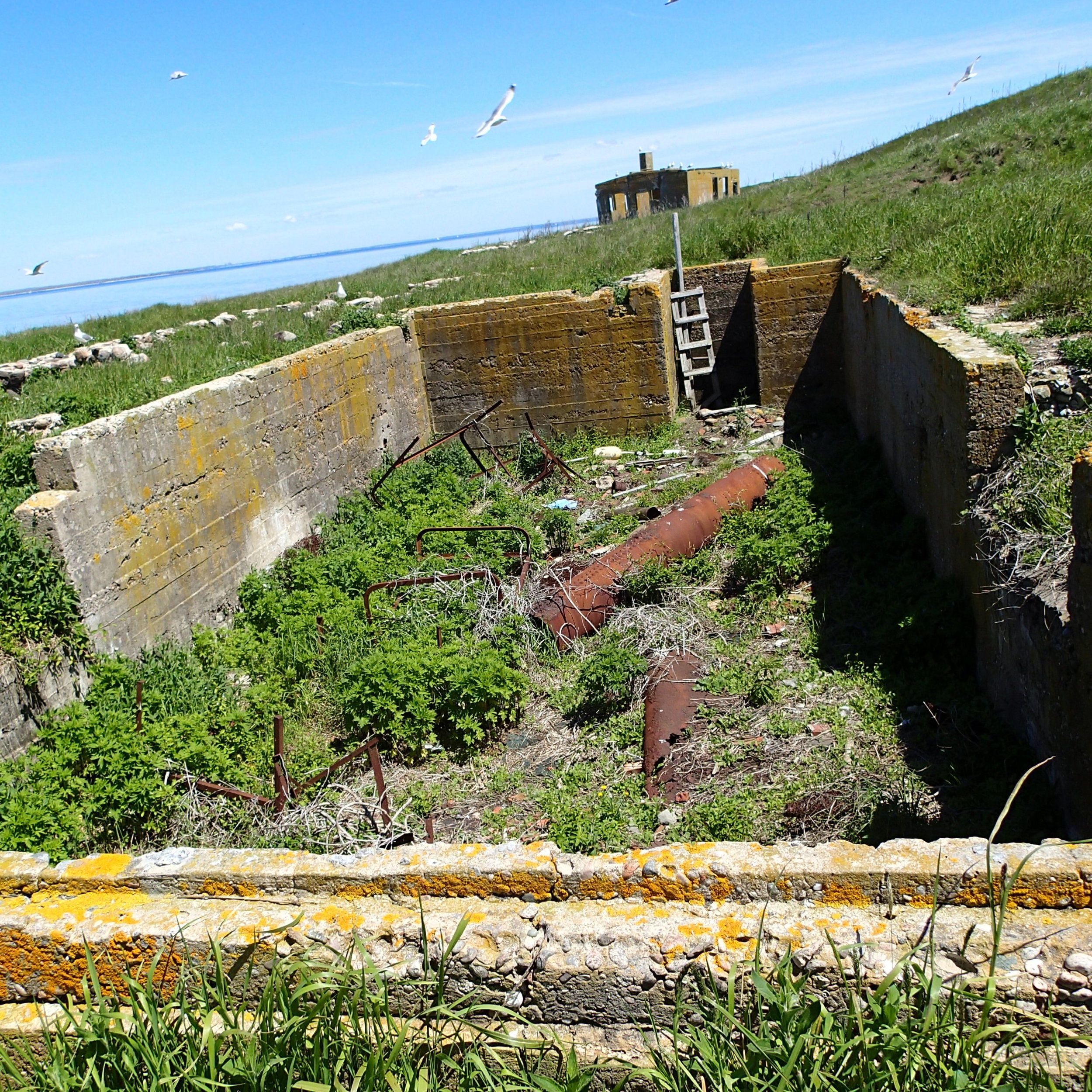Welcome to Penikese Island, a 75-acre island at the West end of the Elizabeth Island chain in Buzzards Bay. Over the centuries the island has been home to Wampanoags, a sheep farm, school of natural history, turkey farm, leper colony, wildlife sanctuary, thousands of nesting sea birds and a school for troubled teen youths.
Penikese Island, 2018
As I entered a tern nesting colony for the first time, I thought to myself, "This must be how Alfred Hitchcock got his motivation for "The Birds" as it compared to scenes from the classic 1963 horror film. This was worse however, as I wasn't watching it from an easy chair with my feet up and a bag of Cheetos in my lap. This was for real and I was smack dab in the middle of it. Nesting Common Terns fiercely defend their colony against intruders with the same tenacity as a school of piranhas feasting on a young lamb.
After landing a seasonal job as a predator control technician for MassWildlife’s Buzzards Bay Tern Restoration Project, I was stationed on Penikese Island for the better part of two months, from mid-May through mid-July, where I was camped-out for three two-week stints.
Carolyn Mostello, MassWildlife seabird biologist and Tern Project leader, prepared staff for what to expect, explaining that when working in or near the colony, there will be a cloud of birds shrieking, dive-bombing and defecating on you. You can expect to be pecked, especially on the head or any exposed skin – and they will draw blood.
In addition to controlling predators, such as voracious black backed gulls, some of my duties on the island covered biological field work within the colony including marking nests, weighing eggs and banding chicks. So yes, I was shrieked at, pecked and crapped on. Except for that, it was interesting, hands-on work. If you love, or even like, wildlife and the outdoors, handling fuzzy tern chicks and camping on an uninhabited island is an extraordinary experience.
Penikese is a 75-acre island at the West end of the Elizabeth Island chain in Buzzards Bay. The main part of the island is connected to the smaller part of the Island, called Tubs, by an isthmus (natural land bridge). Most of the terns nest on the perimeter of Tubs while a few nest on the Southern most point of the main island.
The Common Tern is a familiar seabird but is listed as a Species of Special Concern in Massachusetts. The Roseate Tern is listed as Endangered. Through the early 1950s, up to 15,000 pairs of terns nested throughout Buzzards Bay but the population declined and by 1975 only 1,400 pairs remained.
Terns arrive in Massachusetts in April and May to nest, mostly on islands, and depart for their wintering grounds in late summer. Through the early 1950s, up to 15,000 pairs of terns nested throughout Buzzards Bay but the population declined as the birds were displaced by gulls in addition to being injured by PCB exposure from New Bedford Harbor. By 1975 only 1,400 pairs remained.
MassWildlife’s Buzzards Bay Tern Restoration Project began intensive management in the late 1960s, first with Ram Island, adding Bird Island in 1990 and expanding the project to include Penikese Island in 1998. The population has since increased to 8,000 nesting pairs and the three islands now support nearly half the Roseate Terns in the endangered Northeast population. “Productivity was excellent for both species this year,” said Carolyn Mostello, MassWildlife seabird biologists and Buzzards Bay Tern Project Leader.
he Roseate Tern is listed as Endangered under both the U.S. and Massachusetts Endangered Species Acts. This bird differs from its “common” cousin as it has a black bill and a longer, more graceful, lyre-shaped tail. The Roseate Tern also displays rosy colored plumage on its breast during the breeding season, hence its name. It’s has a much more timid nature and nests within Common Tern colonies for the benefit of protection from predators from their more aggressive cousins. Both tern species are long-lived, with the oldest birds reaching their mid- to upper-20s.
Cormorant chicks certainly wouldn’t win a beauty contest, nor would they win any “parents of the year” awards. Instead of defending their nests and colony when perceived danger approaches, they bail, fly out to sea and wait until the danger passes before returning. Cormorants have established a nesting colony of about 30 pairs on the rocky Southwest side of Penikese. You can locate it with your nose if you’re downwind of the colony.
MassWildlife’s Buzzards Bay Tern Restoration Project began intensive management in the late 1960s, first with Ram Island, adding Bird Island in 1990 and expanding the project to include Penikese Island in 1998. The population has since increased to 8,000 nesting pairs and the three islands now support nearly half the Roseate Terns in the endangered Northeast population.
Penikese, although one of the smallest of the Elizabethan chain and just a half dozen miles South of Dartmouth’s coast and about a mile North of Cuttyhunk, holds a wealth of history. Over the centuries the isle has been home to Wampanoags, a sheep farm, school of natural history, turkey farm, leper colony, wildlife sanctuary, thousands of nesting sea birds, a healthy population of cottontail rabbits and a school for troubled teenage boys. It’s also likely that the island was visited by Vikings and other early explorers.
An American Oystercatcher chick waits by its future nest mate, which has begun to “pip”. Unlike chicks of other seabird species that stay in and around the nest for several days to weeks, Oystercatcher chicks are up and running on the beach within a day of hatching. There were six nesting pairs on Penikese, eight pairs on Bird Island and seven pairs on Ram Island this year.
Looking like two dropouts from the Phyllis Diller Beauty Academy, a Great Egret chick tries to establish the pecking order over its nest mate
In late spring and early summer, life is emerging every few steps throughout the island. On its cobblestone shores are nesting terns, oystercatchers, sandpipers, willets and some gulls, with the majority of gulls colonizing on grassy hills. Great egrets and snowy egrets nest mostly among the thorny beach rose patches above the beach with a few pairs of glossy ibis nesting among them.
Common Terns usually lay a clutch of three speckled eggs in the open on a rocky beach, sometimes on a clump of seaweed. Roseates usually lay a clutch of two eggs under the cover of vegetation above the beach. The parents don’t incubate the eggs until the clutch is complete so they hatch around the same time. One tern chick in this nest has hatched and one egg is “pipping”, meaning the chick inside has begun to break through the shell. “Starring” is when the egg begins to crack before it begins pipping. Chicks most always hatch through the blunt end of the egg.
A tern chick, hatched on Penikese, shows off its new bracelet. MassWildlife biologists banded several hundred tern chicks throughout the three islands in June and early July. Each band has a serial number and remains on the bird throughout its life. There’s enough “wiggle” room inside the band for the bird’s leg to grow without constricting so it still fits comfortably when it reaches adulthood.
Common eiders, which line their nests with soft down feathers, nest mostly in thick cover above the beach. Redwing blackbirds, yellowthroats and other songbirds raise their young in the sparsely scattered shrubs. Canada geese are abundant and they grow quickly, morphing from fuzzy yellow goslings into young adults complete with black heads and white cheek patches within a couple of months. On the rocky southwest side of the island is a colony of cormorants among the boulders and beach peas, while black crowned night herons prefer to nest in the few stands of low trees on the northwest side.
In addition to its abundance of wildlife, another gripping facet of the island is found in the ruins of the Massachusetts State Leper Colony that operated from 1905 – 1921. The skeleton of the tumbledown concrete laundry building is the only standing evidence of the colony that is visible from the ocean. Stone foundations mark the cottages where patients made their tiny, secluded community. The foundation of the hospital, where patients with advanced stages of the disease were cared for, still holds several eerie, rusted steel bed frames. Leprosy, now called Hansen’s Disease, was a misunderstood and feared disease a century ago and those diagnosed with the dreaded illness were immediately sent to the island. While it’s a most pleasant place in the early summer with warm sunshine and sea breezes, it can be inhospitable during harsh winters and one can’t help but feel sadness, compassion and empathy for those banished to live out the rest of their lives, isolated from their families, friends and society.
More than a century has taken its toll on the leper colony’s laundry building on the windswept Northwest shore of the island. Many seafarers passing through Buzzards Bay are unaware of the sad story behind the historic ruins.
Penikese was the site of the Massachusetts State Leper Colony (now called Hansen’s Disease) from 1905 – 1921. Dr. Frank Parker became the Superintendent of the Penikese Island Hospital in 1907 and together with his wife, Marion, treated the patients until the hospital closed in 1921. The couple never contracted the disease. Rusted steel-frame bed frames are askew in the hospital’s foundation. A total of 14 patients had died on Penikese. The remaining 13 patients were transferred to the federal hospital in Louisiana in 1921 when the National Leprosarium opened in Carville. Penikese is said to be haunted by the ghost of Goon Lee Dip, a Chinese patient who is buried on the island.
Dr. Frank Parker and his wife, Marion, cared for the patients from 1907 until the hospital closed in 1921. The couple never contracted the disease. A total of 14 patients died on Penikese and are buried in the cemetery high on a hill, facing North.
After the leprosarium closed, Penikese was declared a Wildlife Sanctuary by the state in 1924 and came under the control of the Dept. of Fish and Game. The public is welcome on the island during daylight hours. Pets, camping, fires, alcohol, firearms, hunting, taking wildlife or wild plants, digging or taking historical artifacts and entering restricted areas all are prohibited. Boats can tie-up at the dock on the East side of the island, near the schoolhouse. I think you’ll find that a visit to the island is educational, captivating and unforgettable.
The Common Tern is a familiar seabird but is listed as a Species of Special Concern in Massachusetts. These graceful, yet aggressive, birds viciously defend their nests and colony against any and all intruders. Entering a tern colony can be compared to swatting a hornet’s nest.
A Herring Gull chick. Both Herring Gull and Black Back chicks resemble puff balls when dry after hatching.













